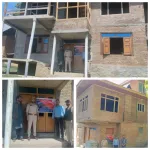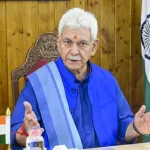CULTURE
In the intricate cultural mosaic of Kashmir, few symbols evoke the warmth of community and generational heritage as vividly as the Jajeer, the traditional Kashmiri hookah. Once a familiar sight in every village household and an indispensable companion in fields and local shop fronts, the Jajeer carries with it a deep-rooted cultural significance. Yet beneath its nostalgic appeal lies a hidden danger—a significant public health concern, particularly for the elderly, who continue to use it as part of their daily routine.
Before the arrival and rise of cigarette smoking in the Valley, hookah smoking reigned supreme. In almost every Kashmiri household, elders gathered to smoke the Jajeer, not just as a recreational habit but as a communal ritual. Though awareness about the harmful effects of smoking has grown in recent decades, leading to a gradual decline in its usage, the Jajeer still lingers as a cultural artifact in certain rural pockets. Its deep connection to the past, however, does not exempt it from scrutiny in the present.
Also known more broadly as water-pipe smoking, the hookah was once widespread across the Indian subcontinent and the Middle East. For centuries, it was erroneously believed to be a safer alternative to cigarette smoking, based on the assumption that the water through which the smoke passes before inhalation filters out toxins. This notion, especially prevalent among Kashmir’s elderly population, has been debunked by modern medical research, which reveals that the volume of smoke inhaled during a single hookah session is often ten times greater than that of a cigarette.
Furthermore, the burning temperature of tobacco in a hookah can reach up to 900 degrees Celsius, generating a host of harmful chemicals and carcinogenic toxins. Contrary to the benign image once associated with it, Jajeer smoking is now recognized as a potent source of health hazards, including respiratory diseases, cardiovascular issues, and multiple forms of cancer.
The term “hookah” derives from the Hindi word “huqqa,” which in turn originates from Arabic, meaning a casket or a water container. The invention of the hookah is widely attributed to Abul Fath Gilani, a Persian physician in the court of the Mughal emperor Akbar, in the city of Fatehpur Sikri. The device soon made its way back to Persia, where it underwent several modifications under the Safavid dynasty, before spreading across the Indian subcontinent in its present form.
In its traditional Kashmiri variant, the Jajeer is a handcrafted assembly of four main components. The base—an earthenware or metallic water bowl, often made of copper or brass—is called the Jajeer itself. Attached to it is the Nalcha, a cane wood hose shaped like an inverted ‘J’. At the neck of the base, a cloth seal known as Gatha is tightly inserted, while the Chillum, the earthenware head of the apparatus, holds the tobacco. A pair of metal tongs, dangling from the Chillum, is used to handle the glowing embers.
The lower end of the ‘Nalcha’ is submerged in the water-filled base, while its upper end is fitted with the Chillum, packed with tamoukh (tobacco) and topped with red-hot charcoal. As the smoker inhales through the mouthpiece, the burning tobacco produces smoke that bubbles through the water before being drawn into the lungs. In moments, thick billows of smoke spiral out, often accompanied by hearty conversations and shared silences.
This practice, locally referred to as “tamoukh tchun” (smoking tobacco), was once a common sight in Kashmiri verandas and farmlands, particularly during agricultural seasons such as paddy planting or harvesting. The preparation of the Chillum served as an invitation for neighbors to gather, and the shared hookah became the centerpiece of impromptu social gatherings—informally known as “tamoukh darbars”. And while predominantly used by men, women were not entirely absent from this tradition.
In the rural socio-political fabric of yesteryears, the Jajeer also played a role beyond leisure. Villages, with limited access to formal legal systems, relied on local assemblies called “Punjae” to resolve disputes and make collective decisions. These gatherings were considered incomplete without a functioning Jajeer at the center—a silent witness to debates, deliberations, and decisions.
Even today, remnants of this tradition persist. In certain rural districts, farmers continue to carry their Jajeer to the fields, accompanied by a “tamoukh dabba”—a wooden or metal box with compartments for tobacco and charcoal residue—and the ubiquitous Kangri, a traditional firepot. Elderly shopkeepers in smaller towns can still be spotted gently puffing on the hookah between customer visits. Just recently, this writer overheard an elderly farmer in the nearby rice fields call out to his granddaughter: “Ate Sozze Jajeer Yaad Kareth Yore” (send the Jajeer here, I’m longing for it.)
Historically, there were two primary types of tamoukh used in Jajeer smoking: the “gubb tamoukh” (a heavy, potent blend) and the “lutte tamoukh” (a lighter variant). Smokers had strong preferences, and even maintained a kind of loyalty to certain vendors. The writer recalls being sent on errands as a child to purchase tobacco from a shopkeeper fondly known as “Nabbe Tamoukh”. Sundays were often spent replacing the Jajeer’s water from a nearby well, a task that seemed mundane at the time but now feels like a ritual from a fading past.
Modern science, however, offers no room for nostalgia when it comes to health. Research has unequivocally shown that Jajeer smoke contains dangerous chemicals such as nicotine, carbon monoxide, and a range of carcinogens that severely affect the lungs, esophagus, pancreas, and even fetal health in pregnant women. Worse still, the mouthpiece of the Jajeer, if not cleaned properly, becomes a breeding ground for infectious diseases like tuberculosis, hepatitis B and C, especially when shared among multiple users.
Tailpiece
In a region where heart disease and stroke remain two of the leading causes of death, it is imperative for all of us to rethink our relationship with all forms of smoking—be it modern cigarettes or traditional Jajeer. What was once thought to be a harmless cultural practice has now been revealed to be a slow-burning public health threat. While the nostalgia surrounding the Jajeer is understandable, it should never come at the cost of our health and the well-being of future generations.
(Author is a noted columnist and author based in Kashmir. Feedback: [email protected])








